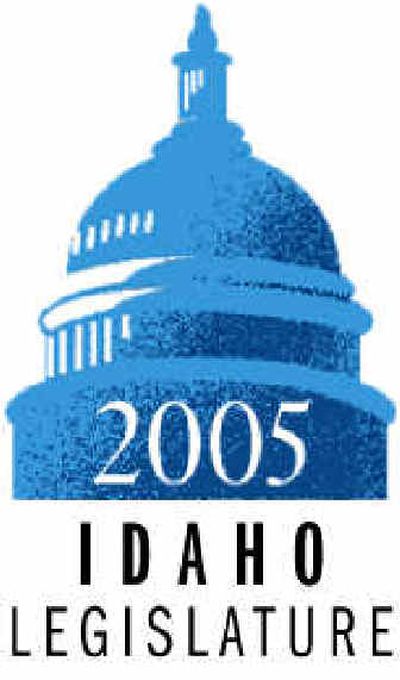Harwood sees dollars in tailings

BOISE – A North Idaho mining company could make “a pile of money” if it could successfully file mining claims to the bottom of Lake Coeur d’Alene and the Coeur d’Alene River, Rep. Dick Harwood said Monday.
Harwood, a St. Maries Republican, sponsored legislation to allow mining firms to get state mining leases for tailings and dumps, not just for naturally occurring minerals – something Idaho now prohibits by law.
Harwood’s bill, HB 60, passed the House Resources Committee on Monday on an 11-5 vote, over the objections of Reps. George Sayler, D-Coeur d’Alene, and George Eskridge, R-Dover.
“We are struggling in Coeur d’Alene to keep the lake off the Superfund list,” Sayler said. Dredging the lake for minerals, he said, is “not what the community wants to do. There is no move toward that.”
Eskridge questioned whether the bill could open other North Idaho lakes and rivers to tailings mining and risk contaminating them. Rep. Jack Barraclough, R-Idaho Falls, said dredging Lake Coeur d’Alene would be “a major disaster, a foolish thing to do.”
Harwood introduced Silver Valley consultant Lee Haynes, who spoke to the Resources Committee on behalf of Jonathan Swift Mining Co. The firm, Haynes said, filed a mining claim on the Coeur d’Alene River, but ran into trouble because of the tailings law. Swift wanted to mine lead, zinc and silver from the Coeur d’Alene River in Kootenai and Shoshone counties.
Haynes compared the heavy metals encased in sediment at the bottom of Lake Coeur d’Alene to aluminum pop cans that he said used to commonly lie along roads – until people got the idea to recycle them, get the value from them, and clean up the environment in the process.
“Once the material is refined and smelted, it no longer is a hazardous material, it becomes a useful material,” Haynes told the lawmakers.
He estimated that the lake and river could contain $80 million to $100 million worth of minerals, including gold, silver, zinc and cadmium, and said the Environmental Protection Agency and Coeur d’Alene Tribe will dredge the stuff up anyway as part of the Superfund cleanup of the basin.
Mark MacIntyre, spokesman for the EPA in Seattle, said, “That’s the first I’ve heard of it. I thought we were still discussing developing a lake management plan for Lake Coeur d’Alene that would protect the water quality so that the 70 million tons of metal-bearing waste can stay on the bottom of the lake, where it’s safest.”
Jim Werntz, Idaho state director for the EPA, said, “I just haven’t heard discussion at all of dredging the lake.”
Haynes told the lawmakers that HB 60 is “a housekeeping bill.”
“That’s basically an old law that’s of no use anymore,” he said of the prohibition against allowing mining claims for tailings. “We saw in it just a little stumbling block.”
Haynes added, “I’m not advocating doing the dredging. … This is a plan the Coeur d’Alene Tribe, EPA and DEQ are doing together.”
He said his firm would like to let others do the dredging, and then it would extract the ore. Asked by the lawmakers if that would create a new hazardous mess, Haynes told the committee, “Once it’s shipped to the smelter, you wave goodbye and that’s it.”
Denise Mills, assistant director of Lands, Range and Minerals for the Idaho Department of Lands, said a firm likely would have to file a mining claim to extract ore from material dredged up by agencies.
She said the state would be highly unlikely to issue a mining lease in Lake Coeur d’Alene or the Coeur d’Alene River because the area is part of a Superfund site, and doing so could make the state a potentially liable party for existing mining contamination.
“The state of Idaho’s liability could be applied retroactively … to the beginning of mining,” Mills told the committee. “This is a very great risk.”
However, Mills said there could be other rivers in the state, where there is no Superfund cleanup, where the proposed law could allow the state to contract with a private company to remove tailings or dumps and extract ore from them.
“We would look at it on a case-by-case basis,” she said.
Under questioning from the committee, Mills said the EPA probably will select some areas where it will remove tailings and other materials from the Coeur d’Alene River.
Rep. Lenore Barrett, R-Challis, said, “Those tailings, they could be very revenue-rich.”
Harwood agreed, and said his bill is the first step to allow Swift Mining to pursue its vision of mining the deposits from the lake and river. “We would like to do that so we could take out the silver, zinc, and lead, and cadmium,” Harwood told the panel. “The EPA calls all them contaminants, where the miners call them minerals.”
He added, “We won’t have to put it in a containment area and we won’t have to watch it forever – them are really good plusses for it.”
In an interview after the committee meeting, Harwood said company officials read official government reports about which minerals are at the bottom of the lake and river. “They said, ‘Holy cow, there’s a pile of money,’ ” he said. “They don’t really want ‘em to dredge, but if they did, they’d want to be able to utilize it. I can see this as a real plus for the state.”
The bill now goes to the full House for a debate and vote.